RR haiku 117
thinking about
doing sit-ups
never mind
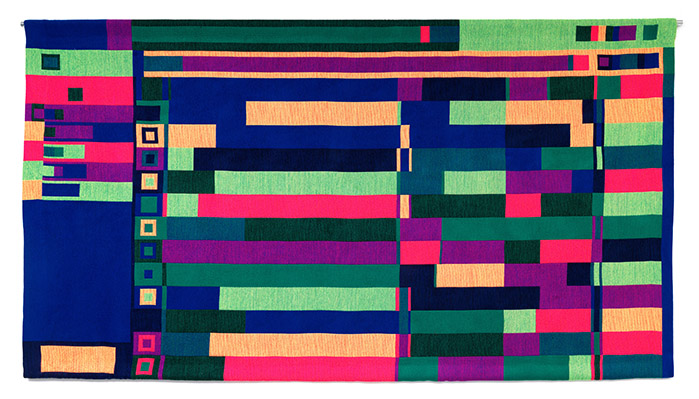
Google Drive, 260 x 144 cm.
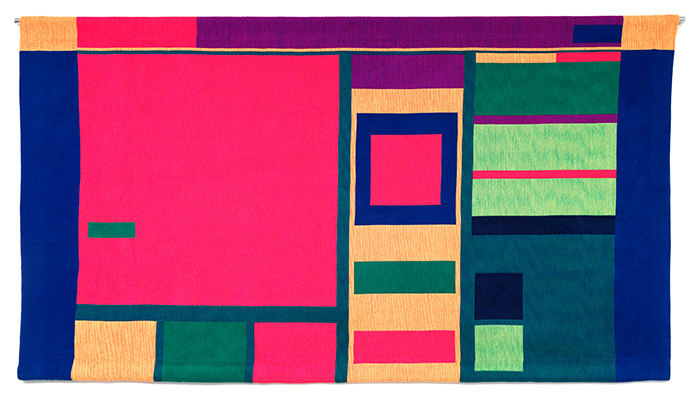
Daily Beast, 260 x 144 cm.
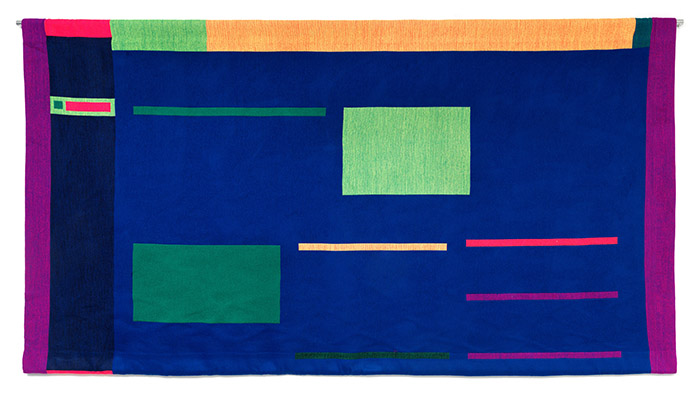
LA Times, 260 x 144 cm.
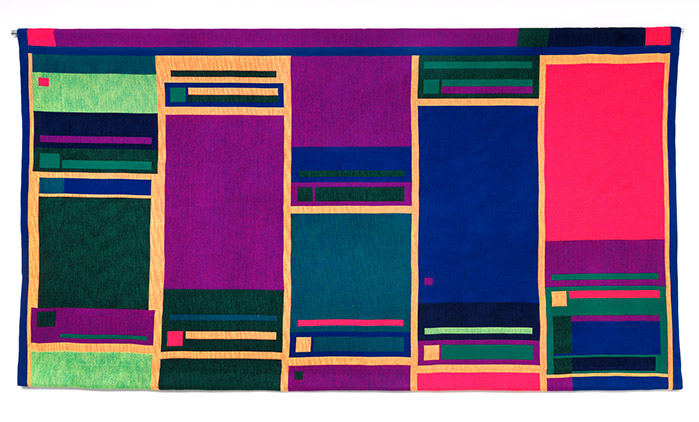
Pinterest, 260 x 144 cm.
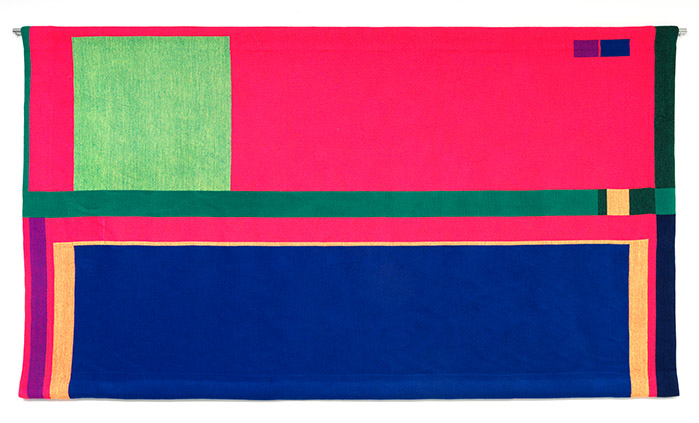
Technorati, 260 x 144 cm.
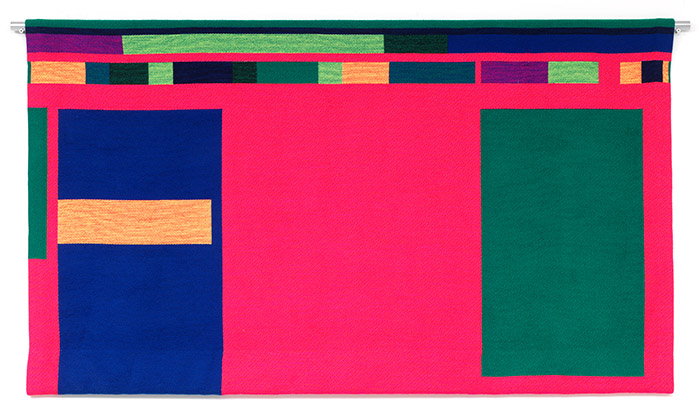
Yahoo, 160 x 90 cm.
I was interviewed by Marvin Jordan for DIS magazine. We talk about the social, economic, and aesthetic conditions that characterize the landscape of internet-based art.
Very happy about this text, read it here.
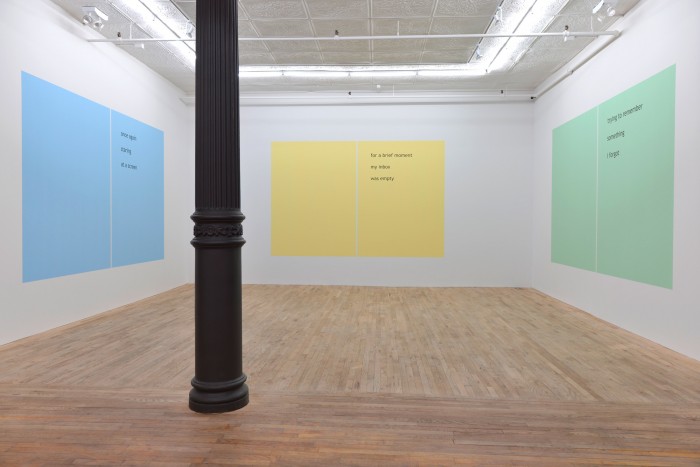
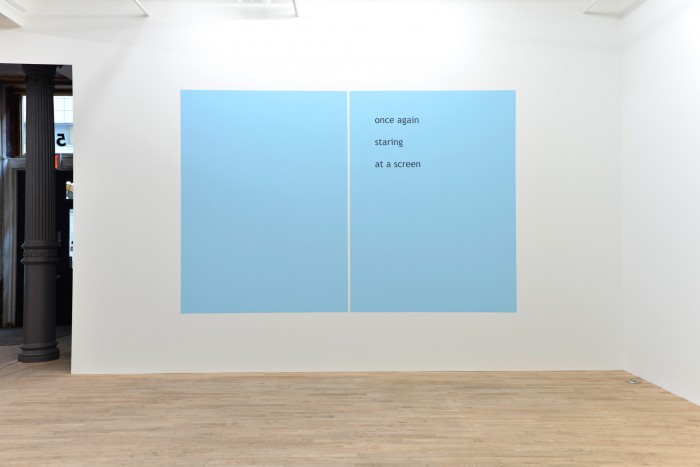
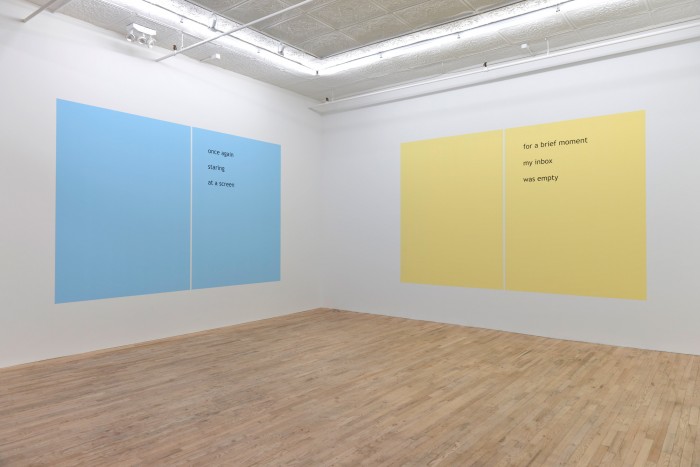
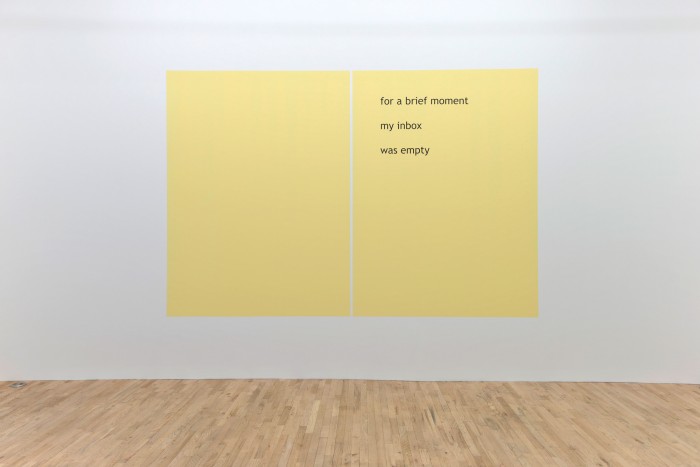
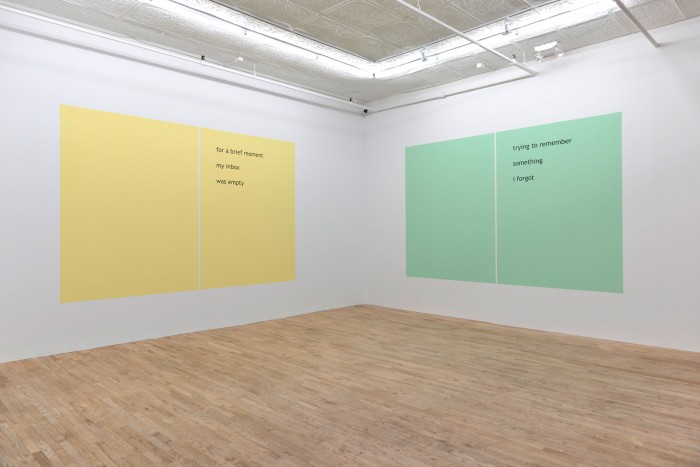
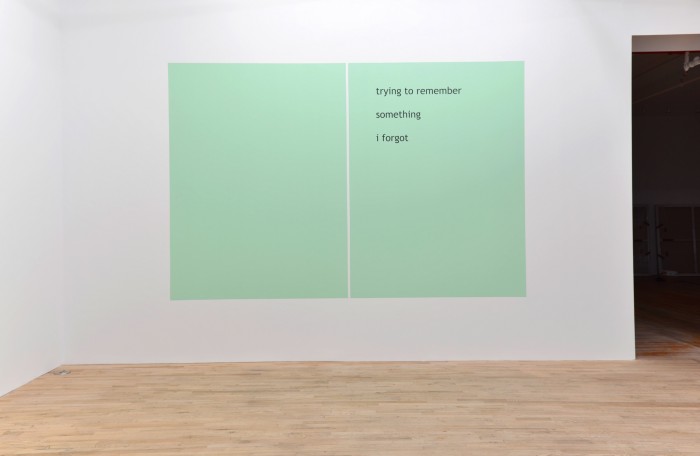
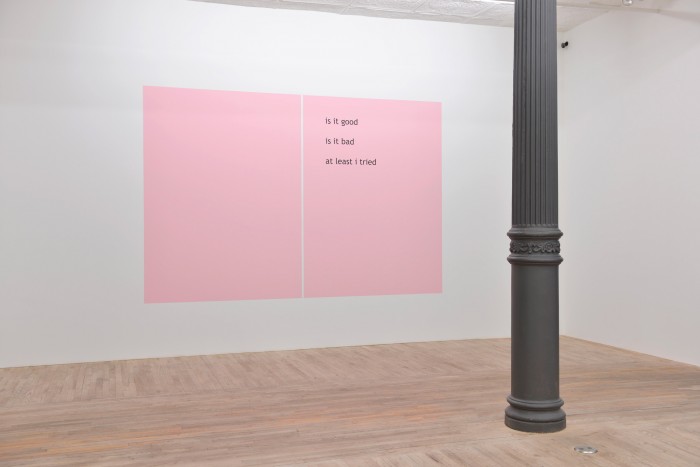
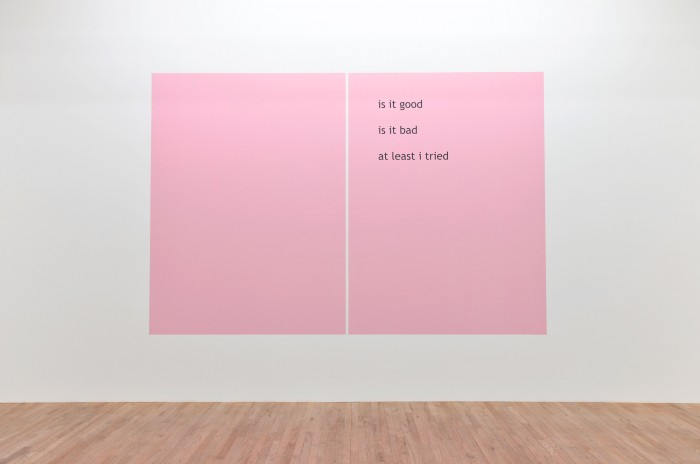
Press release:
all i want to do
is sit on a beach
and write haiku
once again
staring
at a screen
sun rises
sun sets
repeat
Postmasters is very pleased to present a show of haiku wall paintings by Rafaël Rozendaal, Haiku2014 Rozendaal. Catching a daily moment, freezing a thought, a shortcut from one brain to another, easily transferable raw data, truly mobile, universal and indestructible, haikus are an essence in text. Artifacts deteriorate, but words are forever.
Rozendaal’s art, be it his websites, his lenticular paintings, his installations, or his animations, are always about focus, locating an essence of a thought or an image. For this show all it takes is a color and a font.
Like www.muchbetterthanthis.com, his current installation in Times Square, where a simple, minimal animation of a kiss transcends its frenetic surroundings for the fleeting three minutes before midnight, Rozendaal’s haiku rise above the noise and chaos of contemporary art. It’s a joy to write them, so little trouble, just an idea, he says, I find comfort in simplicity… it’s an escape.
The exhibition is accompanied by a $10 book of almost one hundred haiku.
would you create
something amazing for us
we have no budget
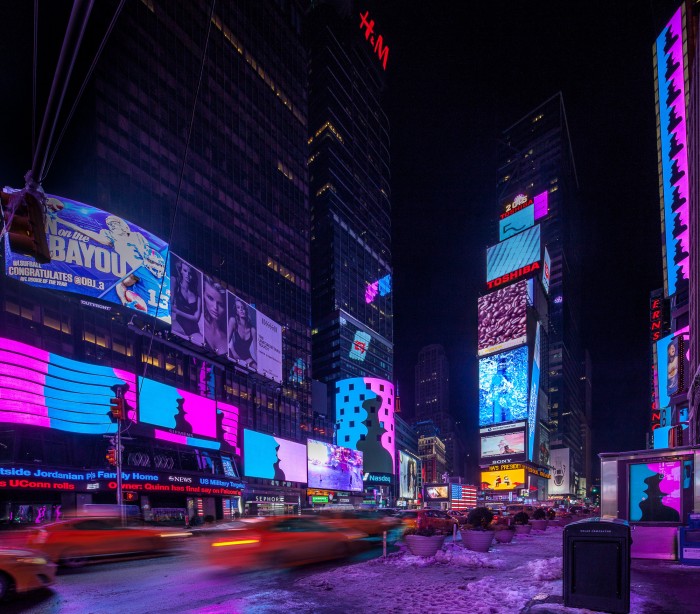
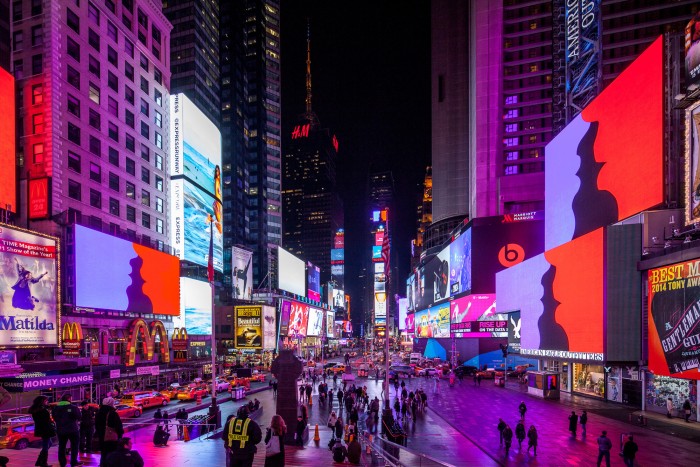
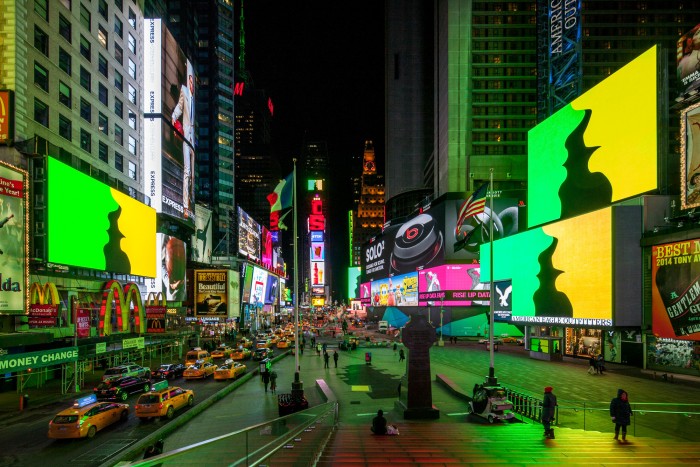
February 2015, Much Better Than This at Times Square New York
Photography by Michael Wells
Organized by Times Square Arts, Times Square Advertising Coalition and Dutch Culture USA
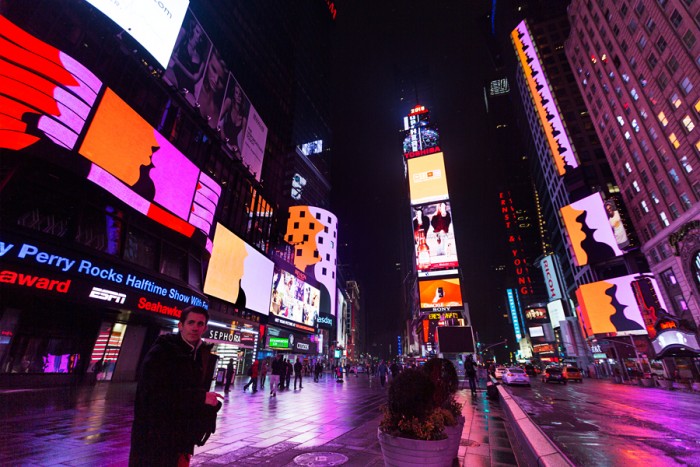
Much Better Than This .com is this month’s Midnight Moment on Times Square.
Each night in February, from 11:57 to midnight, the work will play simultaneously on 47 screens.
Big thanks to: Times Square Advertising Coalition (TSAC), Times Square Arts and Dutch Culture USA.
Photography by Ka-Man Tse for @TSqArts
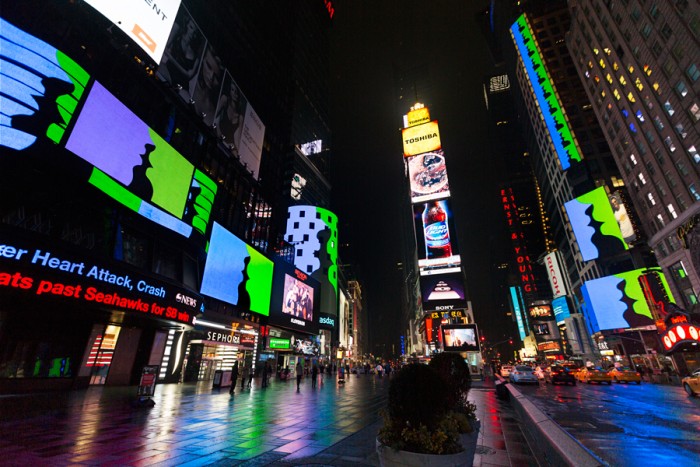
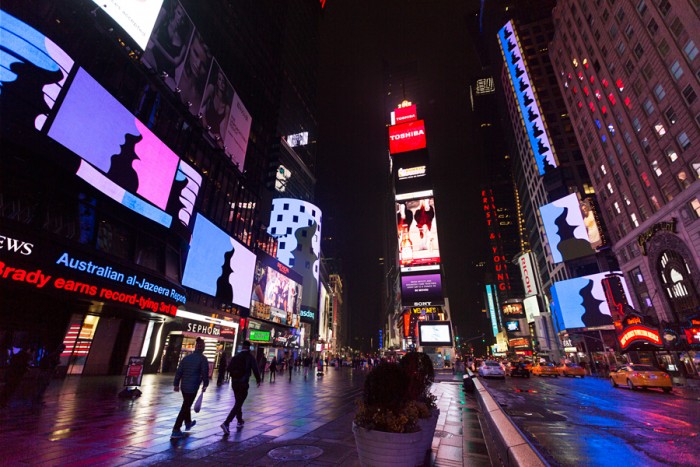
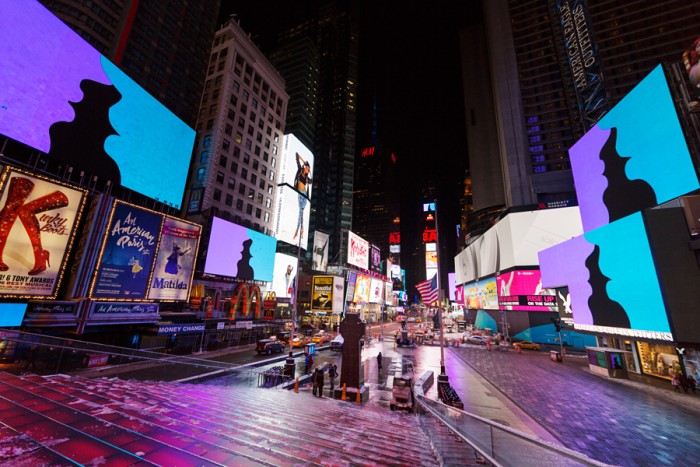
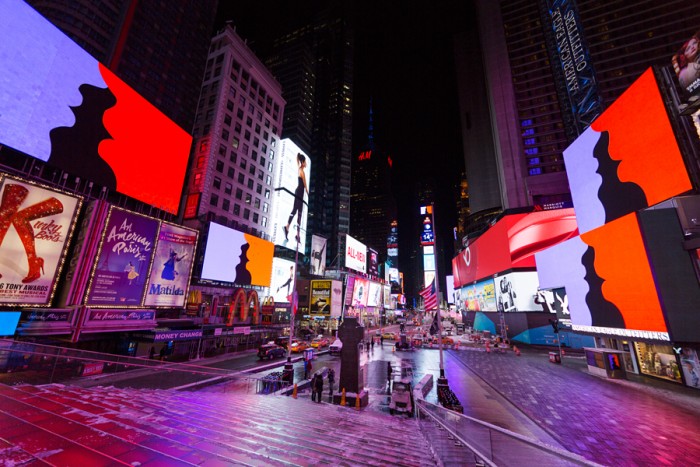

This is an archive of an article in Human Being Journal #5.
Text by Tag Christof, Photography by Clement Pascal.
In the early 1980s, Sherrie Levine gained notoriety for her groundbreaking exhibition After Walker Evans. She had photographed a number of the FSA master’s Great Depression-era photographs (notably all taken before she was born in 1947) and then hung and presented them, in all seriousness, as her original work. She had shot and developed the actual photos on display, so in a strictly ontological sense, the work was hers. But unlike earlier appropriation work, Levine made no attempt to disguise or alter the source. Instead, she made a game of subverting originality by calling it out in the exhibition’s title. The art world bristled. Was it still life? Was it original? Was it just shameless, lazy theft? And what did any of this mean for the value of a photograph as a piece of art?
Fast forward a few decades and art history has sided squarely with Levine. But the work of a new generation of digital artists is begging a similar set of questions around reproducibility, value and ownership. Rafae?l Rozendaal is among their foremost pioneers, having worked on the web prolifically since around the turn of the millennium. He trained as a conventional artist, but since 2001 has been buying up clever domain names on which to set up interactive artworks. The sites are singular — each contains one engaging scenario rendered in bright and proudly RGB palettes, and invites the user into a bit of unexpected usability. Among them are whitetrash.nl, pleasetouchme. com, hotdoom.com, beefchickenpork.com and several others.

Someone finds a trick to simplify a task. This person finishes the task faster and has more time to relax.
Once everyone starts using the same trick, there is no time to relax any more. You have to use the trick. What used to be normal is now slow.